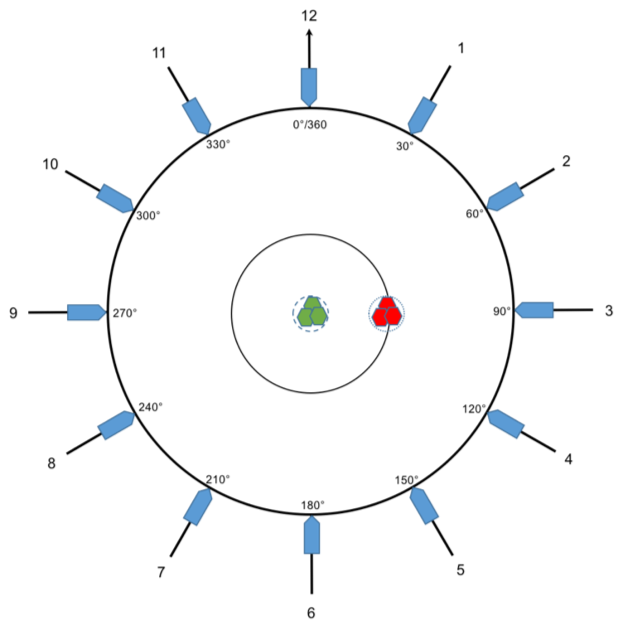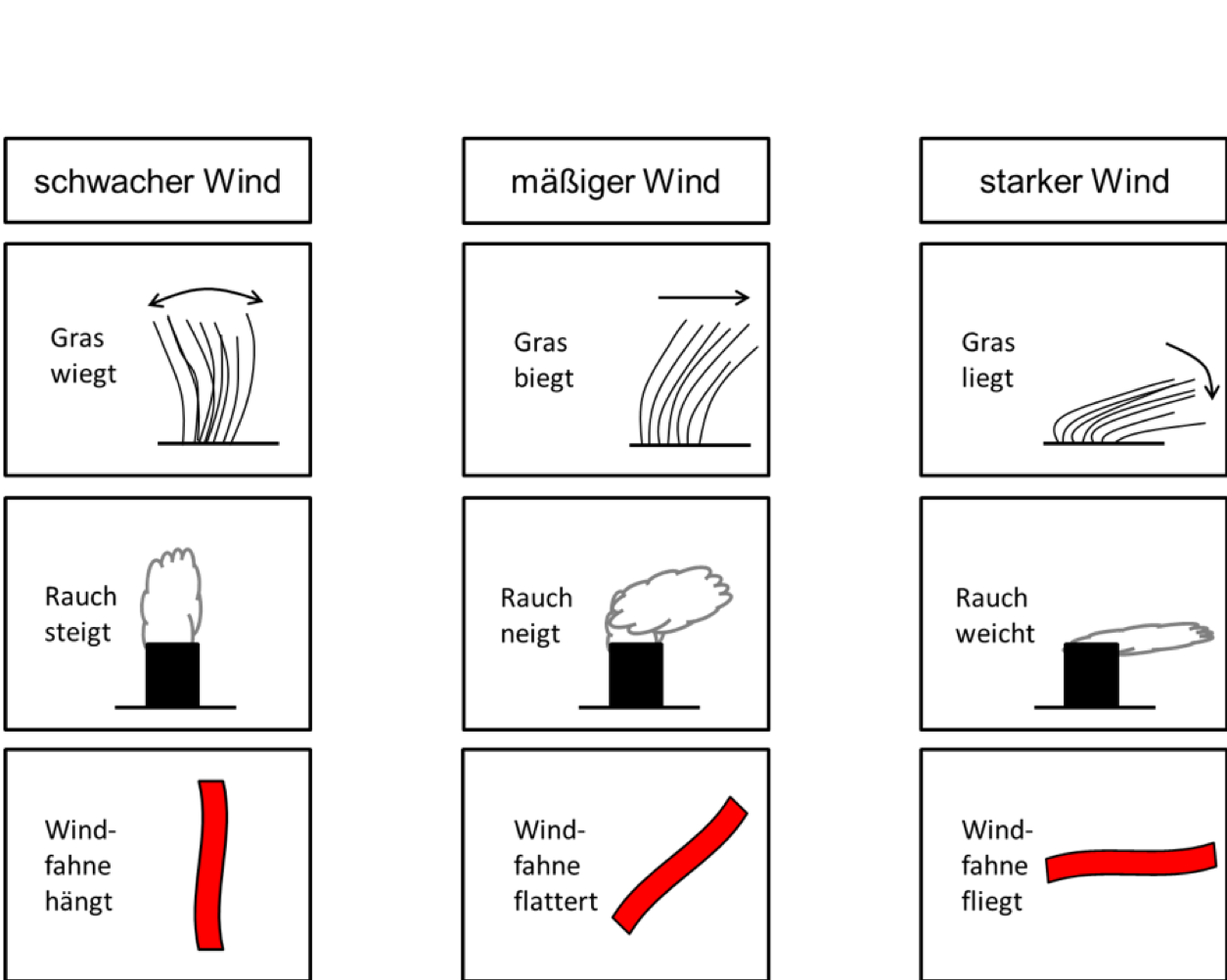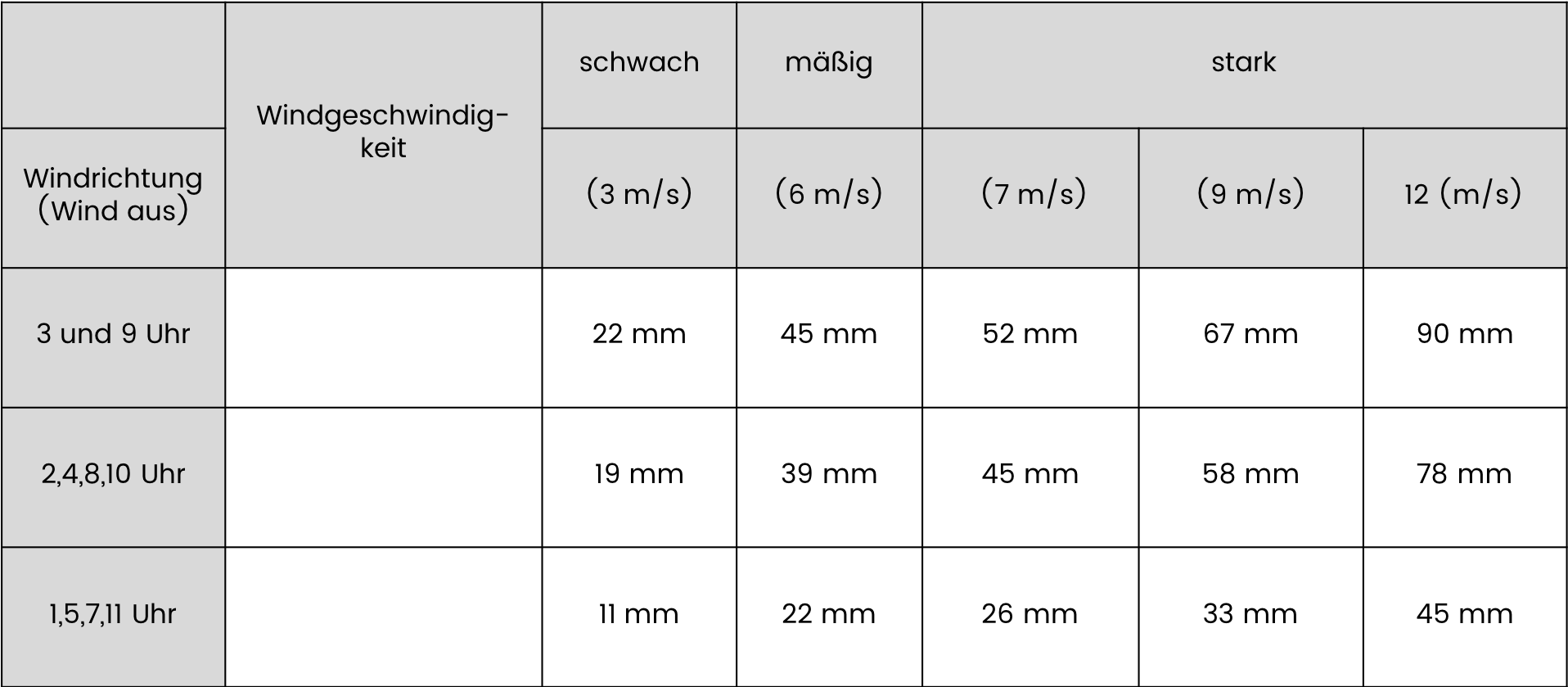Weather 2 - Wind
This post takes an in-depth look at wind, one of the two major weather influences on biathlon shooting.
Wind speeds
For easier consideration, the speed of the wind is converted into
weak wind - 2 to 3 m/s,
moderate wind - 4 to 6 m/s and
strong wind - from 7 m/s to 12 m/s
(according to (Nitzsche, et al., 1998), modified).
This classification forms the basis for further assessment of the wind, its potential effects, and the application of standard responses to be developed.
Wind direction
For all further considerations, the wind direction should be the 12 o'clock direction on the dial of a clock. In this way, the wind direction can be easily understood, very quickly, and even under stress, can always be related to the weft direction via the hour indications on the dial (Fig. wind directions).
The wind does not always affect the projectile completely with its entire velocity. Thus, the calculable wind drift depends on the direction from which the wind hits the projectile and how much of its effect is then transferred to the projectile. These relationships behave as follows:
100% at 3 and 9 o'clock,
87.5% at 2, 4, 8, and 10 o'clock,
50% at 1, 5, 7 and 11 o'clock,
0% at 12 and 6 o'clock.
This means, for example, that with a moderate wind of 4 m/s from 5 o'clock, there is only a weak wind with an effective velocity of 2 m/s acting on the projectile. The necessary reaction of the athlete must therefore refer to weak wind with this combination of speed and direction.

Furthermore, a phenomenon of barrels with right-hand twist must be taken into account. In this case, not only does the bullet drift sideways due to the influence of the wind, but it also shifts upwards. Thus, with wind from the left, the bullet drifts not only to the right, but also downward or low and upside down. So with wind from the right, the projectile drifts not only to the left, but also up or high.
Determination of wind speed and direction
Before assessing the wind, the wind speed and wind direction must either be measured or determined using auxiliary means. Only then can an assessment of the wind in terms of effects on the projectile and thus the expected hit pattern take place, taking into account the specifications made under wind speeds and wind directions.
A permanent, device-based, measurement at the shooting range according to speed and direction (if possible at the shooter's line in the target area and in intermediate areas) is of course the optimum. However, this measurement is
- mostly available only at competitions,
- usually not as seamless as desirable and
- available only in the context of zeroing before competitions.
Therefore, wind speed and wind direction must be able to be determined at any time, also with existing aids. Such aids are, for example, the wind vanes present on the shooting ranges, cloud/fog drafts, smoke, precipitation (snow, rain) or also the effects on other athletes (hair blowing, fluctuations in the standing position, fluttering start number while standing). The figure determination of wind strength and direction with aids shows examples for evaluation. The respective direction must be completed in relation to the shooting direction.

In doing so, determinations can be made on the basis of experience gained. This could be done, for example, as follows. The wind vanes prescribed in the IBU - rules standardized
- hang down in light winds and move only slightly,
- are lifted up to 45° in moderate wind and flutter clearly visible,
- blow/fly almost horizontally in strong winds.
The direction can also be "read" from these wind vanes, as they are attached to a movable arm and can thus align themselves independently in the direction of the wind.
Effects of the wind
In order to assess the wind, knowledge of the actual effects on the bullet trajectory is also necessary. The table shows the wind drifts for this purpose (cf. also http://www.norma.cc/de/Munitionsschule/Ballistik/iframe/) of a standard KK (.22 lr) cartridge (bullet weight = 2.6 g, V0 = 360 m/s (cartridge IBU - rules: bullet weight = 2.55 - 2.75 g, V0 max. = 360 m/s)), which corresponds to the IBU - rules. This assumes that the wind acts uniformly over the entire firing distance.

This means that the average point of impact shifts to the left (with wind from 1,2,3,4,5 o'clock) or to the right (with wind from 7,8,9,10,11 o'clock) by the specified values. If we look at a hit pattern corresponding to the center of a paper target of 12 mm diameter, for example, there are potential misses on the prone center of the mechanical biathlon target system even in weak wind, insofar as it comes from 3 or 9 o'clock (Fig. Wind Direction) and thus acts perpendicularly on the trajectory of the projectile.
This results from:
- Diameter meeting image 12 mm (green shots),
- Shifting the center point of impact by 22 mm to the left or right (red shots),
- + 6 mm to the edge of the hit image,
- are 28 mm deviation from the center of the target,
This results in a deviation (exceeding the edge of the hit zone) of 5.5 mm for a 45 mm diameter of the prone hit area and thus a miss, since only 0.1 mm is missing here for the full circumference of the projectile and thus not enough projectile mass will cause the falling target to react. For the standing position, on the other hand, there are no effects to be considered under these specifications, purely mathematically, since the hits are still safely in the standing center of the target.
Wind assessment
The main findings of the previous sections on the evaluation of the wind are not only the absolute values of the wind drifts at the different wind strengths and wind directions, but above all the differences that arise between weak, moderate and strong wind. Only by taking these findings into account can the necessary reaction be derived when, for example, the wind changes between zeroing in strong wind (measured on the shooting range) to weak wind in the course of the competition.
Summary
Only those who know these principles for assessing the wind, learn to take them into account better and better with increasing experience, and can apply them with confidence will be able to make a hit even under difficult conditions. The considerations about the wind will be supplemented in another article about the light and visibility conditions.
